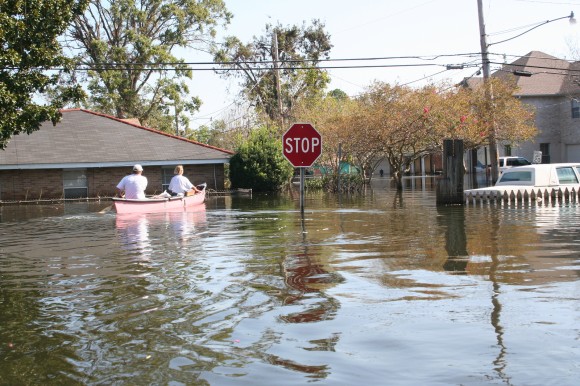It seems that practically every time you turn on the news, a part of the United States is being threatened by a significant weather-related event. It’s sometimes anyone’s guess when and where the next weather-related catastrophe will hit and what it will look like. Will it be a hurricane, tornado, earthquake or something else? It would be nice to know so you can prepare for it. That means preparing your agency and your customers.
Unfortunately, no one really knows the “when,” “where” and “how severe” of the next big weather event. This is why agents must be proactive in addressing the issues that will ultimately minimize the potential of their agency facing errors and omissions litigation when a catastrophe strikes their community.
Do not wait for the event to be in the news before your agency starts doing something about it. By then, it is probably too late. However, if 100 – or even more – of your customers suffered a loss, which is what happened to many agencies because of Superstorm Sandy, the odds of a mistake or error definitely increase.
For example, tremendous devastation often results from a hurricane.
In the early 1990s when a hurricane hit, one agency pulled files when its customers reported claims, only to discover that 14 customer files contained an application with a check attached. Coverage had never been bound. Had the hurricane not hit, those files with the checks attached would probably not have been identified before a loss occurred – and this was only one agency!
As the saying goes, “nothing brings out an agent’s mistake as quick as a catastrophe.”
Could Your Agency Be Affected?
It might. What actions has your agency taken to ensure that your files/records will survive? Presuming that most agencies are automated, what will happen to your system? What if the server resides in your office and gets damaged? This happened to many agencies as a result of Superstorm Sandy.
Most agencies, but not all, are diligent in backing-up their systems. Where is your back-up located? Having it in your office won’t do your agency much good if your office is impacted by a catastrophe. If the back-up is on a disk stored in your vehicle, what is the potential that your vehicle could be swept away? This actually happened to an agency during Hurricane Katrina. The system back-up was stored on a disk kept in the owner’s truck. Just guess what happened.
Backing-up your files is a good thing, as is ensuring that the back-up will survive. Check with your agency’s IT folks to determine the vulnerability of your back-up to a weather-related catastrophe. In addition, if a storm were to hit your community, make sure your disaster recovery plan includes your employees. Will you be able to get in touch with them? Do they have access to get into the agency system from their homes?
Do No Wrong and Still Get Sued
When there is an E&O action taken against an agency, the customer file will speak for itself, for the most part. What is the level and quality of the documentation? Does the file reflect the customer being advised in writing of various issues? Was specific coverage rejected by the customer?
It appears from Superstorm Sandy – and is probably true for other weather-related catastrophes – that while some agents are facing E&O litigation, the file in question is in very good order. Issues include:
- The client was advised in writing that the flood policy provided coverage for the building but not the contents.
- The client was advised in writing of the 30-day waiting period. The customer delayed completing the application until it was evident the storm was going to hit. This prompted the customer to get the coverage, but the storm hit during the waiting period.
- The agency required the client’s signature rejecting the excess flood proposal.
- The client was advised to read the policy.
When customers face significant financial disasters they may believe they have no other choice than to sue their agent.
Minimize Potential for E&O Litigation
Educating your staff is one of the fundamental places to start for enhancing your agency’s E&O culture. After all, customers rely on the agency staff’s knowledge and expertise to help them understand their coverages and how they work. If the staff is not technically proficient, incorrect information could be communicated to customers. Did this occur during Superstorm Sandy? Some E&O claims are alleging this.
Develop a campaign to offer coverages such as flood, earthquake or business interruption to all applicable customers. If the customer rejects the coverage, get the rejection in writing. Some agencies include this on their proposals, note that the offer is only valid for a certain number of days and, if the coverage is not requested in that time period, it is presumed the customer does not want the coverage.
Getting a signature, though, is the best way to document a rejection of coverage because it removes any doubt of what the customer’s intentions were. A recent carrier study stated that 70 percent of those small businesses affected by Superstorm Sandy did not have business interruption coverage. Was the coverage ever discussed and offered? An annual account review with both personal and commercial customers would seem to address this.
What else can you do? Become a “documentation fanatic.” Documentation really is the key that will determine the direction and path of an E&O claim. For example, agencies that advised their customers of the 30-day waiting period stand a much better chance of prevailing if E&O litigation occurs. In addition, don’t issue a binder if the coverage is technically not in effect. It is critical that agency staff be extremely familiar with the coverage and the rules for what is necessary for coverage to be bound.
Topics Catastrophe Agencies Claims Hurricane
Was this article valuable?
Here are more articles you may enjoy.



 Florida OIR Triples the Size of Citizens’ Rate Decrease
Florida OIR Triples the Size of Citizens’ Rate Decrease  AIG Announces Strategic Investment Partnership of Up to $3.5B With CVC
AIG Announces Strategic Investment Partnership of Up to $3.5B With CVC  New York Governor Hochul Vows to Tackle Insurance Affordability, Litigation and Fraud
New York Governor Hochul Vows to Tackle Insurance Affordability, Litigation and Fraud  10 Highest Class-Action Settlements in 2025 Eclipsed $70B Total: Duane Morris
10 Highest Class-Action Settlements in 2025 Eclipsed $70B Total: Duane Morris 



